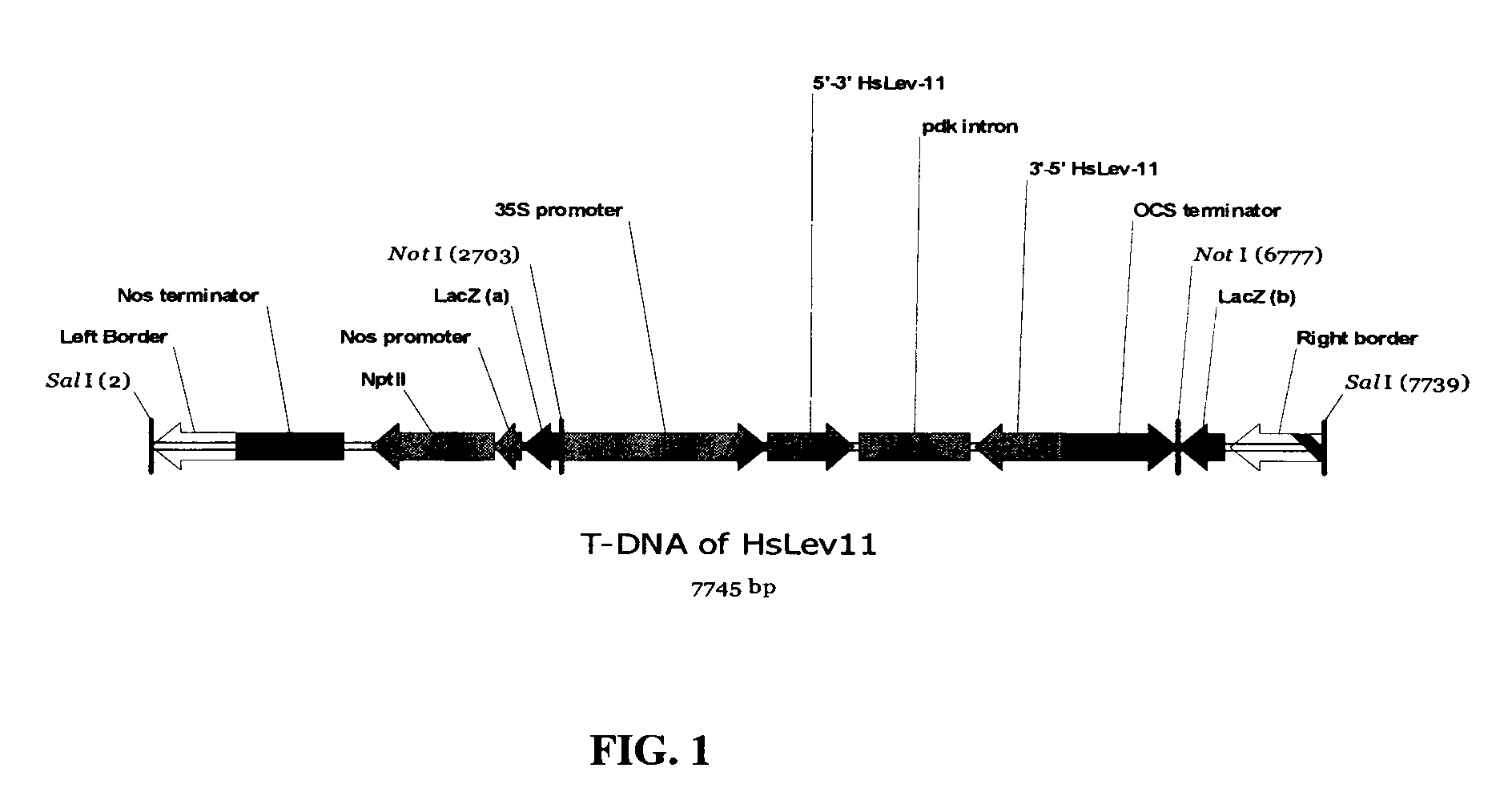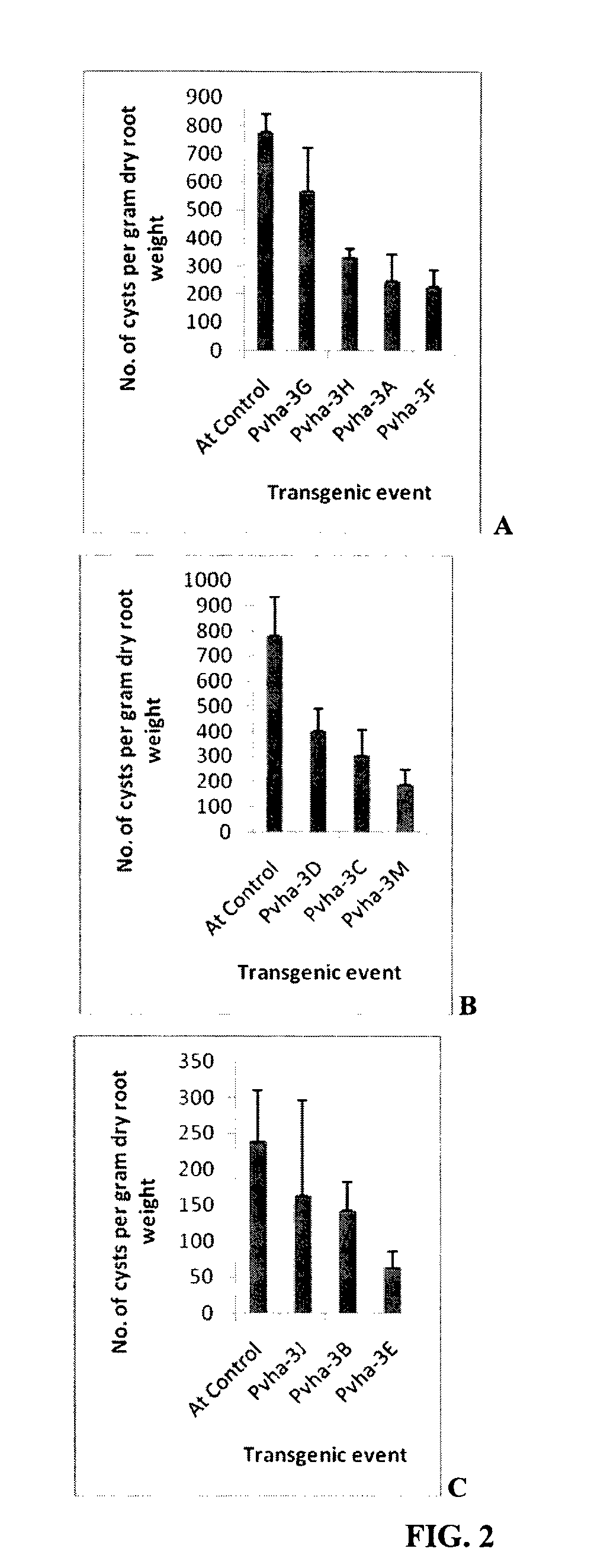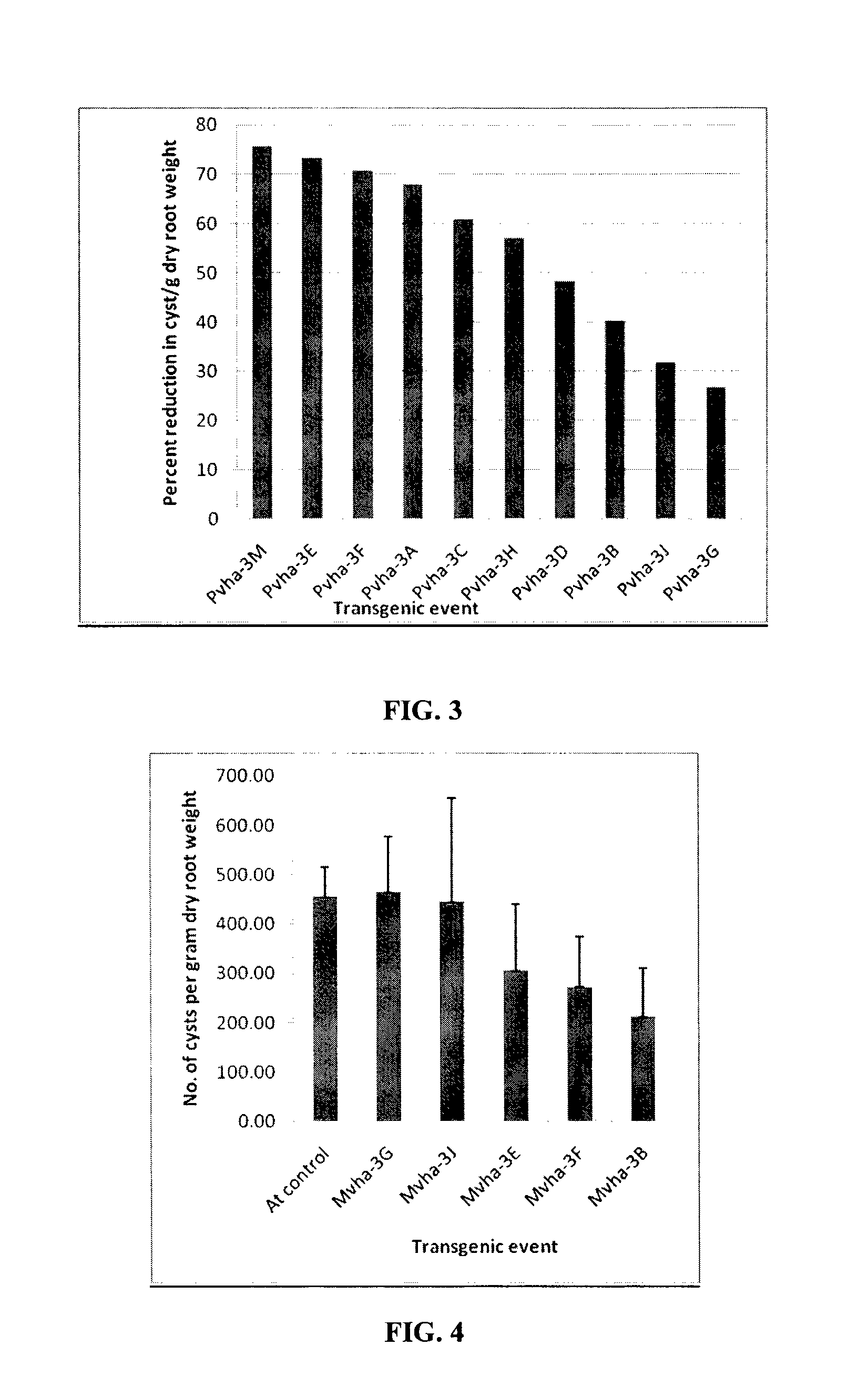Target genes for control of plant parasitic nematodes and use of same
a technology of plant parasites and target genes, which is applied in the field of target genes for controlling plant parasitic nematodes and the use of same, can solve the problems of brown lesions, long-term infections within roots that are often very damaging to cro, and significant economic losses in agriculture and livestock, so as to reduce the number of feeding sites established, improve crop yield, and reduce the effect of nematode feeding sites
- Summary
- Abstract
- Description
- Claims
- Application Information
AI Technical Summary
Benefits of technology
Problems solved by technology
Method used
Image
Examples
example 1
Identification of Target Genes
[0112]To identify target genes for the present invention, a careful study on RNAi of genes in Wormbase, the comprehensive database of information on C. elegans, was conducted. C. elegans genes identified for the present invention were known to be essential genes for which RNAi disrupted the development, growth and viability of the nematodes at different stages of the life cycle. The functions of these genes can be expected to be conserved in diverse organisms and especially among nematodes. A bioinformatics study of the genes indicated that they were specific enough to avoid off-target effects; more especially their sequences were dissimilar to that of plants, humans and other mammals. Six genes involved in growth and development of the target nematode were analyzed. They are involved in general metabolic processes including embryogenesis, development to adulthood such that their down-regulation results in RNAi phenotypes of C. elegans that affect growt...
example 2
Structure and Biology of Target Genes
[0113]Vacuolar H ATPase Subunit 3 (vha-3)
[0114]The vha-3 gene encodes an ortholog of subunit c of the membrane-bound domain of vacuolar proton-translocating ATPase (V-ATPase), predicted to carry protons from the cytosol to vha-5, vha-6, vha-7, or unc-32 for transmembrane export (Oka et al., 1998; Oka and Futai 2000; Inoue et al., 2005). VHA-3 is functionally identical to VHA-2, but lacks an intron, and shares an operon with vha-11 (Oka and Futai 2000; Inoue et al., 2005). vha-3 is expressed predominantly in the gastrointestinal and hypodermal cells of C. elegans, and weakly in the excretory cell (Oka and Futai 2000; Inoue et al., 2005). It is highly expressed in the embryo and development to adult stages, but much lower during larval stages. RNAi of vha-3 in C. elegans affects molting, movement, and structure, and in some cases, results in arrests in larval development, and also embryonic and larval lethality (Table 1) (Simmer et al., 2003; Rual ...
example 3
Amplification of Target Genes from H. schachtii and H. glycines
[0120]The H. schachtii orthologs of the six genes (SEQ ID NOs:1-9) were obtained using the amino acid sequences derived from C. elegans gene sequences to query several databases including the National Center for Biotechnology Information (NCBI), Nembase (located at www.nematode.org) and the website Nematode.net. Comparative analyses of identified orthologs were then undertaken with those of other parasitic nematodes including plant and animal parasites (such as Brugia malayi) to confirm identity. Available sequences were further analyzed after back-translation using ORFFinder to identify coding regions. In cases where more than one EST was available, contigs were made after multiple alignments to obtain the maximum length of coding region possible. When no EST was available in the database for H. schachtii, that of the closely related H. glycines was used to design primers. These genes were called “perfect gene or seque...
PUM
| Property | Measurement | Unit |
|---|---|---|
| length | aaaaa | aaaaa |
| aperture size | aaaaa | aaaaa |
| aperture size | aaaaa | aaaaa |
Abstract
Description
Claims
Application Information
 Login to View More
Login to View More - R&D
- Intellectual Property
- Life Sciences
- Materials
- Tech Scout
- Unparalleled Data Quality
- Higher Quality Content
- 60% Fewer Hallucinations
Browse by: Latest US Patents, China's latest patents, Technical Efficacy Thesaurus, Application Domain, Technology Topic, Popular Technical Reports.
© 2025 PatSnap. All rights reserved.Legal|Privacy policy|Modern Slavery Act Transparency Statement|Sitemap|About US| Contact US: help@patsnap.com



